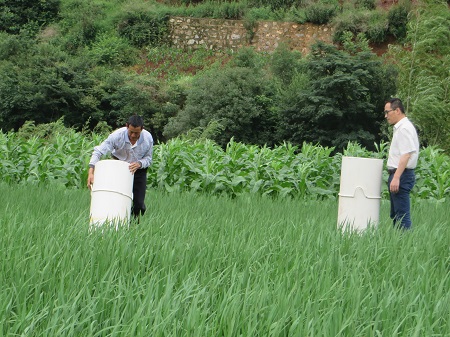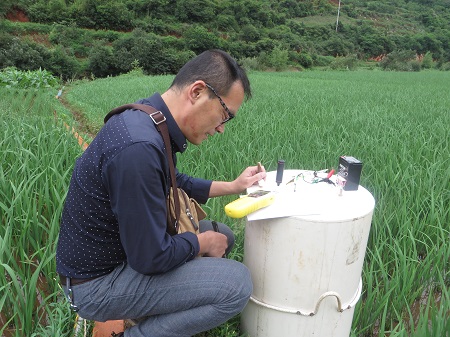Home \ Project News \ Farmer’s Clubs in Xundian Continue the Fight to Reduce Carbon Emissions
A brief summary of the project:
A 2 years “Climate-Smart Agriculture” Project in Xundian County, Yunnan Province, was launched on the 1st of January 2015.The project, with funding from Blue Moon Fund, supports 400 households in 2 administrative villages through the forming of ‘Farmers’ Clubs’. The project aims at decreasing carbon emissions, strengthening the soil’s carbon storage capacity and adapting to climate change while at the same time improving yields and income for the farmers. The project advocates for climate-smart agriculture methods by mobilizing the community and farmers’ participation. From the start of the project 10 Farmers’ Clubs were established and through them villagers were organized together to purchase seeds, exchange experiences and share marketing ideas to reduce the cost of their farming production and increase returns. At the same time, villagers have been trained in production planning, farming, water and soil conservation. By the end of 2015, the project had achieved its first initial results in emission reduction.
The project has organized a variety of activities this year. During the planting phase we carried out training on rice seedling management and on-the-spot guidance to farmers on how to cultivate strong seedlings and farmers were trained on-site in sowing the seeds. The project staff continuously visited the farmers to assess the growth of the rice seedlings. They also gave guidance to the farmers on how to manage the water and fertilizer and how to control pests in order to have strong and healthy seedlings. This whole process was carried out in collaboration with the local agricultural bureau and invited experts. Due to training and continuous monitoring of the whole process the quality of the rice seedling showed improvement this year.
The project staff introduced inter-cropping and the farmers used this method in planting beans and maize. The project worked hard doing research, prepare for methane gas sampling and detect new sampling methods in order to find out how much methane emissions can be saved by growing rice using the Climate Smart Agriculture method “Rise Precise Quantitative Planting Technology (RPQPT)” instead of traditional methods. RPQPT is a method involving wet and dry cycles where the amount of water in the rice paddy is alternated to avoid roots decomposing due to lack of oxygen. It also involves spacing the plants and planting them when they are still small, about (15cm).
Various experts including Wang Xiaoli and Gu Jianlong from Yunnan Academy of Scientific & Technical Information and Lei Baokun from Yunnan Academy of Agricultural Sciences were consulted in relation to the new approach of emission measuring and estimation in 2016. A new method involving a portable device for emission measuring was discussed and is now tried out.
On the 17th of May Gu Jianlong from Yunnan Academy of Scientific & Technical Information visited the project twice and prepared the methane gas sampling test equipment. The sampling equipment was installed and Gu Jianlong provided training to the project personnel on how to carry out the sampling. In the month of June for the first time air samples for RPQPT paddy rice were collected from the fields and sent to the laboratory in Environmental Science Research Institute of Kunming - and data collection using the new portable device were also obtained for further study. From July onwards the project also sent air samples in rubber bags to a laboratory in Beijing.
Since then the staff has sampled methane gas the whole summer, every week bringing the containers with gas to the laboratory in Kunming where they have been analyzed. In September we will know the final result of how much emission of methane gas has been saved during rice planting this year, using the RPQPT rice planting method.
Preparing the testing equipment ready for installment
nstalling the testing equipment in the rice fields
Farmer is testing the equiment
Prof. Gu Jianlong checking the testing result

This project is funded by Blue Moon Fund (www. bluemoonfund.org) and Humana People to People Baltic (www.humana.lt).
Content in this article reflects the views of the authors and not those of the funder.